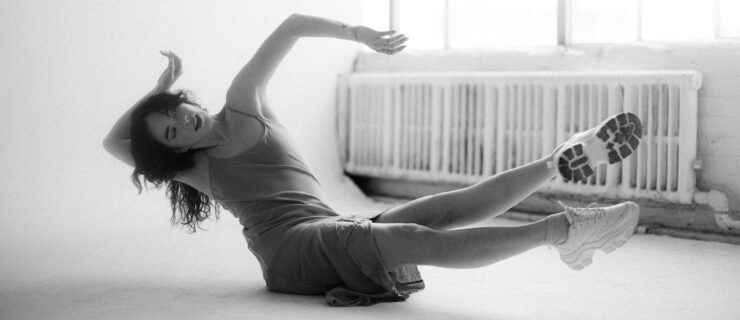What It's Like to Be a Dance Double on FX's "Pose"
2018 has blessed us with “Pose,” the dance-centric FX show that breaks down all kinds of barriers. A sensitive portrayal of the vibrant ball culture of 1980s NYC, “Pose” not only features the largest cast of transgender actors ever to appear on a scripted TV show, but also includes some serious dancing.
One of the stars of “Pose” is aspiring pro dancer and ball scene novice Damon (played by Ryan Jamaal Swain), a student at the fictional New School for Dance. His dance scenes, many of which were filmed at the real-life Ailey School in NYC, required strong artistry and commitment from both Swain and his dance double, Brion Marquis Watson. We talked to Watson—who’s currently in his third year of the Ailey School’s certificate program, and is also a musical theater buff—about what it’s like to be a dance double on this history-making show.
 (From left) Brion Marquis Watson and Ryan Jamaal Swain on the set of “Pose” (photo by Swain)
(From left) Brion Marquis Watson and Ryan Jamaal Swain on the set of “Pose” (photo by Swain)
How were you cast in
Pose?
One of the Ailey School directors, Tracy Inman, approached me about a TV show he was choreographing for that was being filmed at Ailey. It’s actually kind of funny, because I’d formally auditioned for the role of Damon the year before. At first, Mr. Inman just asked me to be a dancer in the class scenes. But after I sent my resumé and head shot to casting, they asked me to be a double for Damon. I was flabbergasted. It’s crazy how life works! Even though I didn’t get the original part, I had trust and faith, and I ended up with this amazing opportunity.
How much did you know about the ballroom scene before joining the cast, and how much have you learned about it since?
Previously, I didn’t know anything about the culture of the ballroom scene. And my part in the show didn’t have much to do with that side of things. So I actually learned a lot about the ball scene and ball culture while watching the show.
Why do you think this period is an important part of dance history?
It’s definitely an important part of dance history, but also an important part of black/Hispanic/ethnic history. It was a time when we were finally free to explore and express ourselves, in shapes, forms and fashions that previously weren’t acceptable. It let people be who they wanted to be. You could be your own artist.
What was it like to double for Swain?
I’m not going lie, it was a surreal experience. Since I’d auditioned for the role, to then fit so well with the guy who got the role—and I love Ryan, we’re good friends—it was wonderful, the way it worked out. It’s truly humbling. You never know where you’re going to be used or what’s meant for you. Be grateful, because you never know when it’s going to come back around!



